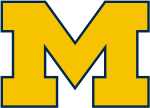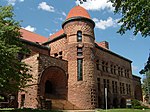University of Minnesota College of Liberal Arts
1868 establishments in MinnesotaEducational institutions established in 1868Liberal arts colleges at universities in the United StatesUniversity of Minnesota
The University of Minnesota College of Liberal Arts (CLA) is the largest college of the University of Minnesota in the Twin Cities of Minnesota. Established in 1868, the College of Liberal Arts offers more than 65 majors and 70 minors to its more than 13,600 undergraduate students, as well as more than two dozen majors to its 1,500 graduate students. The various departments of the College of Liberal Arts are housed in several buildings located in both the East Bank and West Bank areas of the university's Minneapolis campus.
Excerpt from the Wikipedia article University of Minnesota College of Liberal Arts (License: CC BY-SA 3.0, Authors).University of Minnesota College of Liberal Arts
Southeast Pleasant Street, Minneapolis
Geographical coordinates (GPS) Address Nearby Places Show on map
Geographical coordinates (GPS)
| Latitude | Longitude |
|---|---|
| N 44.975861111111 ° | E -93.236388888889 ° |
Address
Johnston Hall
Southeast Pleasant Street 101
55455 Minneapolis
Minnesota, United States
Open on Google Maps







